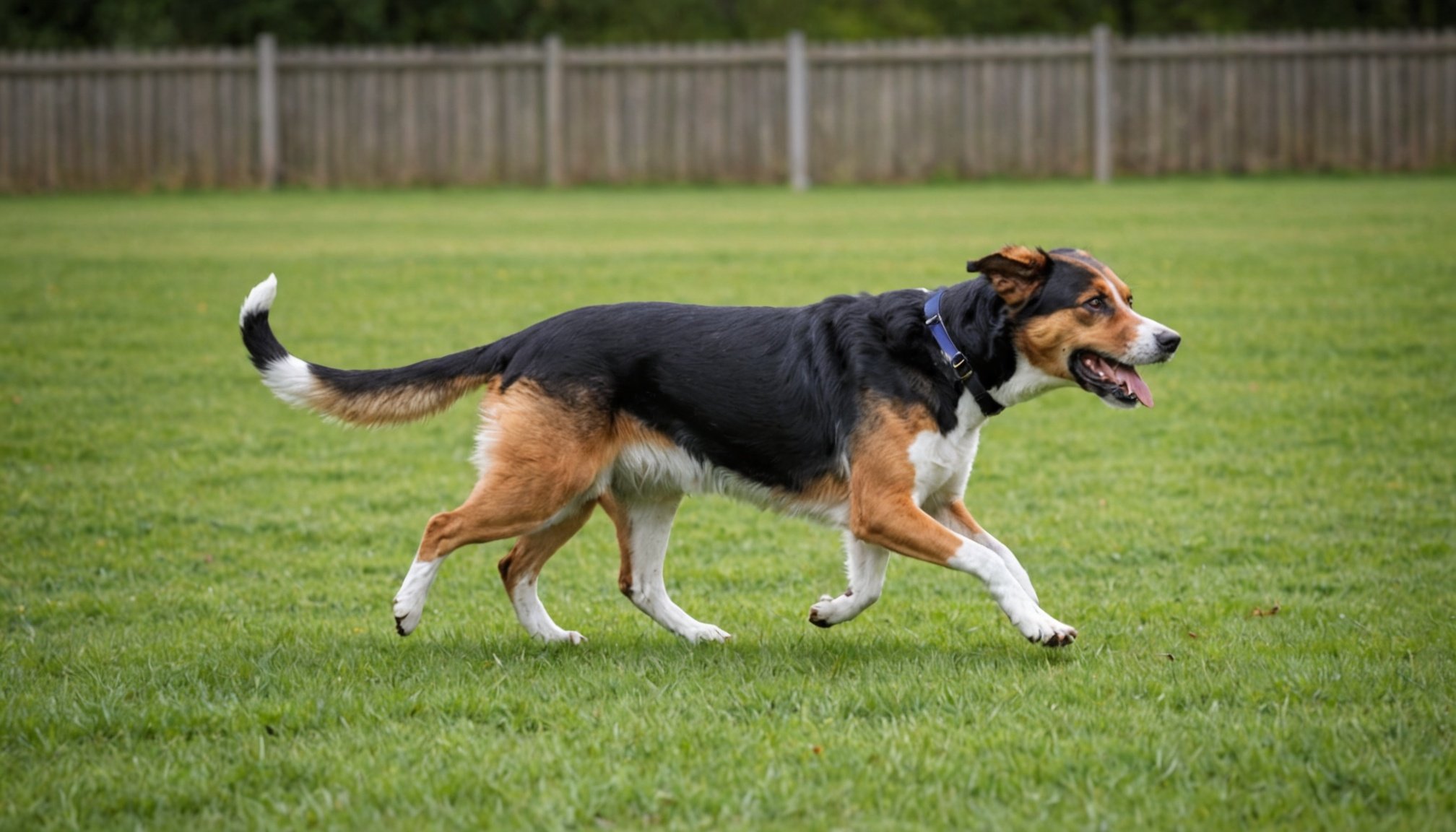Spotting Signs of Canine Overexertion: Essential Cues to Observe in Training Sessions
When it comes to training your dog, whether it’s for basic obedience, agility, or simply to keep them active, it’s crucial to be aware of the signs of overexertion. Overexertion can lead to serious health issues, from muscle soreness and heatstroke to more severe conditions like exercise-induced seizures. Here’s a comprehensive guide to help you identify and prevent overexertion in your furry friend.
Understanding Canine Overexertion
Canine overexertion occurs when your dog engages in physical activity that exceeds their physical capabilities or health limits. This can happen due to various factors, including intense exercise, hot weather, or underlying health conditions.
Also to see : Unlocking the secrets to loose leash walking: essential training tips for your dog”s success
Why It’s Important to Recognize Overexertion
Recognizing the signs of overexertion is vital to ensure your dog’s health and well-being. Here’s what Dr. Veronica Higgs from PetMD emphasizes:
“Early diagnosis and aggressive treatment of heatstroke and other overexertion-related issues are important for a pet’s survival and recovery.”[3]
In the same genre : Essential supplements for enhancing joint health in senior dogs: your ultimate guide
Signs of Canine Overexertion
Identifying the signs of overexertion is the first step in preventing serious health issues. Here are some key cues to look out for:
Behavioral Changes
- Lethargy: If your dog seems unusually tired or lacks enthusiasm for activities they normally enjoy, it could be a sign of overexertion.
- Decreased Enthusiasm: A decrease in your dog’s usual energy levels or reluctance to participate in activities is a red flag.
- Changes in Behaviour: Look for changes like whining, yawning, or avoiding eye contact, which can indicate stress or discomfort.
Physical Signs
- Excessive Panting: While panting is normal for dogs, excessive panting, especially in hot weather, can be a sign of overexertion.
- Drooling: Increased drooling can be a sign of heat stress or overexertion.
- Limping: If your dog is limping or showing signs of muscle soreness, it may indicate overexertion.
- Muscle Weakness: Weakness in the hind legs, stumbling, or dragging hind legs can be symptoms of exercise-induced seizures or overexertion[1].
Here is a detailed list of signs to watch out for:
- Wide Stance: Your dog may adopt a wide stance for stability, indicating muscle weakness or disorientation.
- Tremors: Uncontrolled muscle twitching can indicate neurological dysfunction.
- Foaming at the Mouth: Excess salivation can result from stress or involuntary muscle activity during a seizure.
- Heavy Panting: This signals distress and is often observed before or after a seizure.
- Sudden Collapse: If your dog suddenly collapses during exercise, it indicates severe overexertion or an imminent seizure.
- Visible Discomfort: Changes in gait, stiffness, or visible discomfort when walking can indicate muscle soreness or overexertion[1][5].
Preventing Overexertion in Training Sessions
Preventing overexertion involves a combination of careful planning, monitoring, and adjusting your training sessions accordingly.
Warm-Up and Cool-Down
A proper warm-up and cool-down are essential to prevent injuries and overexertion. Here’s a tip from Hundeo:
“Not only your muscles, but also your dog’s muscles need time to adjust to the upcoming exertion. You can repeat the commands ‘sit’, ‘down’ and ‘give paw’ to your dog as a warm-up.”[2]
Monitor Fatigue
Keep an eye on your dog’s fatigue levels. Here are some tips to monitor and manage fatigue:
- Short Sessions: Start with short training sessions and gradually increase the duration as your dog becomes more conditioned.
- Breaks: Ensure your dog gets regular breaks to rest and hydrate.
- Hydration: Make sure your dog drinks plenty of water before, during, and after the training session.
- Weather Conditions: Avoid training in extreme weather conditions. For example, in hot weather, train early in the morning or late in the evening[3][4].
Choose the Right Activities
Not all dogs are suited for the same level of physical activity. Here are some guidelines:
- Ideal Breeds: Larger, active dogs like Australian Shepherds, Border Collies, and Labradors are more suited for jogging and high-intensity activities. Short-legged or brachycephalic dogs are not ideal for such activities[2].
- Age and Training: Only start intense training after your dog’s bones have finished growing, typically around 12 months. Increase the distances and intensity slowly[2].
Managing Health Issues
Underlying health issues can significantly impact your dog’s ability to handle physical activity.
Health Checks
Before starting any intense training, have your dog checked by a vet to ensure they are healthy enough for the activity. Here’s what Lolahemp advises:
“Dogs with underlying conditions such as congestive heart failure and diabetes can collapse after a few minutes of intensive activity. Providing hydration, moderating exercise intensity, and managing your dog’s medical conditions can help prevent exercise-induced seizures in dogs.”[1]
Managing Specific Conditions
- Heatstroke: Ensure your dog has access to shade and water when outdoors. Never leave your dog alone in a car, even on seemingly cool days[3].
- Exercise-Induced Collapse: This is a genetic condition that causes progressive weakness in dogs. Monitor for signs like muscle weakness in the hind legs, stumbling, or sudden collapse[1].
Practical Tips for Safe Training
Here are some practical tips to ensure safe and effective training sessions:
Use the Right Equipment
- Harness and Leash: Use a chest harness and a jogging leash to prevent injuries and maintain control[2].
- First Aid Kit: Always carry a first aid kit and have your vet’s contact information handy in case of emergencies[2].
Listen to Your Dog
Pay attention to your dog’s body language and behaviour. Here’s a tip from Community Animal Hospitals:
“Listen to your dog’s cues and adjust physical activity accordingly to avoid overexertion and muscle soreness. By slowly increasing the load, you can help your dog improve their fitness in a safe way.”[4]
Table: Comparing Signs of Overexertion and Heatstroke
Here is a comparative table to help you distinguish between signs of overexertion and heatstroke:
| Symptoms | Overexertion | Heatstroke |
|---|---|---|
| Panting | Excessive panting, but may not be as severe as in heatstroke | Severe excessive panting |
| Body Temperature | Normal or slightly elevated | Elevated temperature (over 104 F) |
| Gums/Mucous Membranes | Normal or slightly reddened | Reddened gums/mucous membranes |
| Behaviour | Lethargy, decreased enthusiasm, whining | Disorientation, seizures |
| Physical Signs | Muscle weakness, limping, stiffness | Muscle spasms, vomiting, diarrhea |
| Environmental Factors | Can occur in any weather, but more common in intense physical activity | More common in hot, humid weather |
Training your dog is a wonderful way to provide physical activity, mental stimulation, and strengthen your bond. However, it’s crucial to do so safely and responsibly.
Here’s a final tip from Lolahemp:
“Keeping your dog active requires understanding their health needs and limits. You can balance exercise intensity and monitor for distress in dogs with exercise-induced seizures. Consult with your vet to discuss how you can improve your dog’s well-being while avoiding seizures.”[1]
By being vigilant and proactive, you can ensure your furry friend stays healthy, happy, and safe during all your training sessions. Remember, every dog is unique, so tailor your approach to your dog’s specific needs and health conditions. With the right care and attention, you and your dog can enjoy many rewarding and fun training sessions together.











